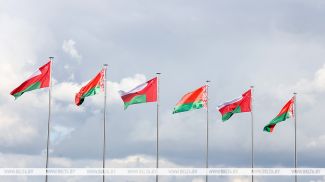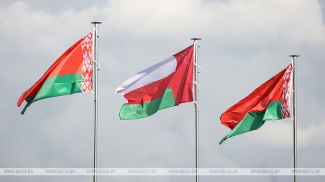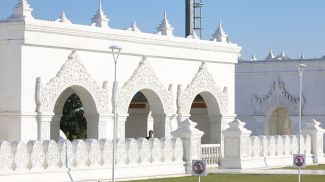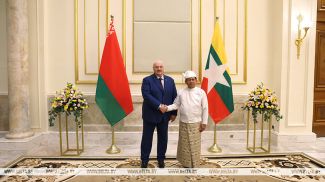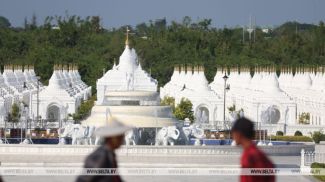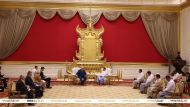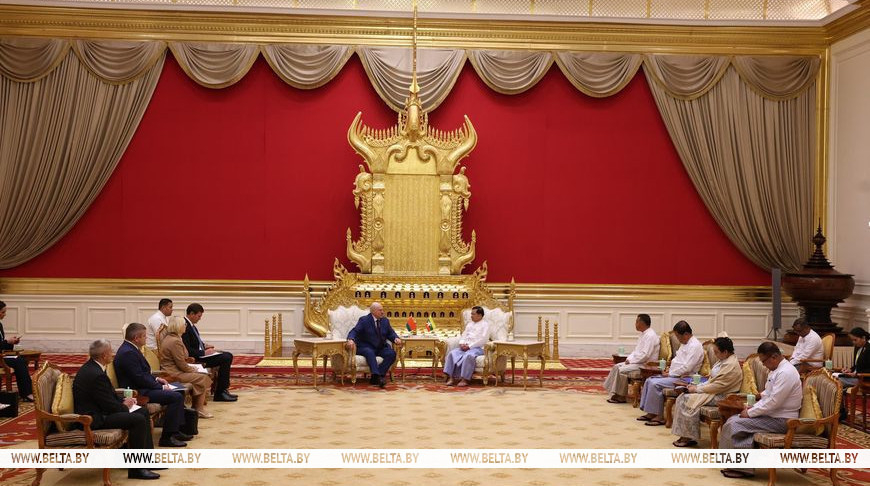
MINSK, 28 November (BelTA) - Belarusian President Aleksandr Lukashenko went on a major foreign trip on 26 November. The itinerary covers Southeast Asia, the Middle East, and North Africa, BelTA has learned.
The first country on the itinerary was Kyrgyzstan where Aleksandr Lukashenko took part in the summit of the Collective Security Treaty Organization (CSTO). Following this, the head of state paid his first official visit to Myanmar where he held substantial summit talks.
Next on the schedule is a working visit to Oman. Dialogue with this country has gained momentum recently. The Sultan of Oman was recently received in Minsk, and now new steps are expected in the development of relations. The negotiations are still ahead, and BelTA will certainly report on all the details.
However, this major trip is not over yet. Algeria is located in the North African region. Recently, Aleksandr Lukashenko expressed his intention to visit this country.
KEY POINTS FROM THE PRESIDENT'S STATEMENTS AT THE CSTO SUMMIT
The main day of the international forum was 27 November but the leaders also met informally the evening before at the Ala-Archa state residence. It is located in the national park of the same name, known for its scenic nature - an ideal place to discuss any pressing issues in a relaxed setting.
Aleksandr Lukashenko and Russian President Vladimir Putin had a separate meeting. The presidents discussed the bilateral agenda and, of course, Ukraine and the prospects for a peaceful settlement.
The summit itself the following day was held in the Yntymak Ordo administrative building. This is a new architectural symbol of Kyrgyzstan. The name holds deep meaning. ‘Yntymak” means “peace, friendship, and unity” and “Ordo” refers to a place and center where strategically important decisions determining the country's future are made and implemented.
Indeed, one way or another, all the decisions adopted at the summit were future-oriented. Since the CSTO is a military-political organization (which suggests discipline among its members), all documents approved by the heads of state had been thoroughly prepared in advance. Even Armenia, that has frozen its participation in the organization, albeit in absentia, did not exactly object to the adopted decisions. The total package is substantial amounting to about two dozen documents and, for obvious reasons, not all of them should be discussed publicly.
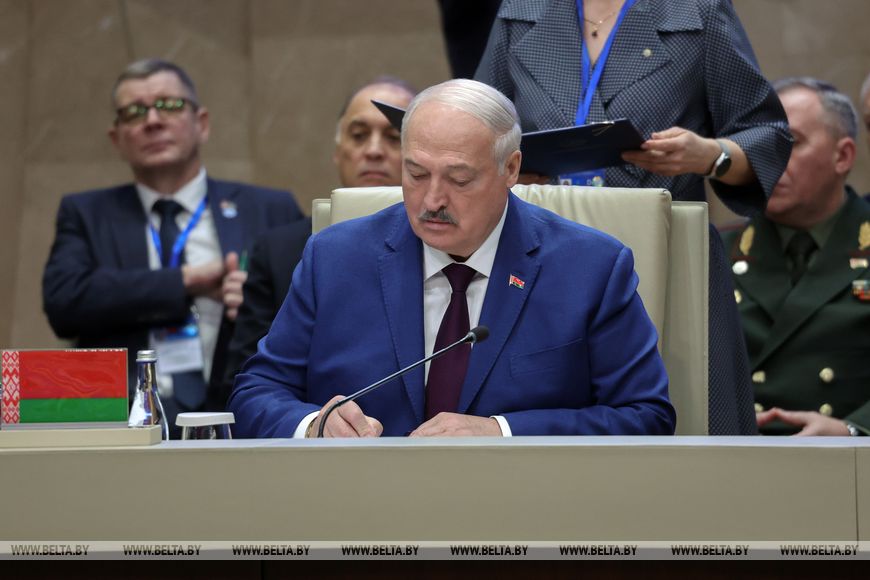
The main outcome document of the summit is the Declaration of the Heads of State. It spells the consolidated approaches of the parties on current issues. Among the agreements shaping the architecture of collective security for the near future are the CSTO Anti-Drug Strategy for 2026-2030 and the Plan for the Development of Military Cooperation for the same period.
The chairmanship of the organization passes from Kyrgyzstan to Russia for the next year. Furthermore, the CSTO has a new chief. Talatbek Masadykov, a representative of Kyrgyzstan, has been appointed as Secretary General for the next three-year term.
Indeed, when it comes to the formal outcomes of such summits, there is typically little suspense. For journalists, however, the speeches delivered by the leaders provide ample material for discussion and catchy headlines. This is especially true when it involves Aleksandr Lukashenko, who is known for speaking his mind plainly and directly, without mincing words. This instance was no exception.
On tectonic shifts in international relations
In his address, the head of state stated that multilateral arms control mechanisms have either been completely destroyed or have lost their effectiveness due to confrontation and a lack of trust.
“Military risks and threats are escalating along the perimeter of the CSTO borders, particularly on the western flank of the organization, where, it would seem, an adequate and stable situation should be maintained. The situation is akin to a besieged fortress, which is what Belarus is living in today,” the president said.
European countries, Aleksandr Lukashenko stated, are effectively shifting their economies onto a war footing, and furthermore, they continue to supply weapons to Ukraine, which subsequently spread across the entire world.
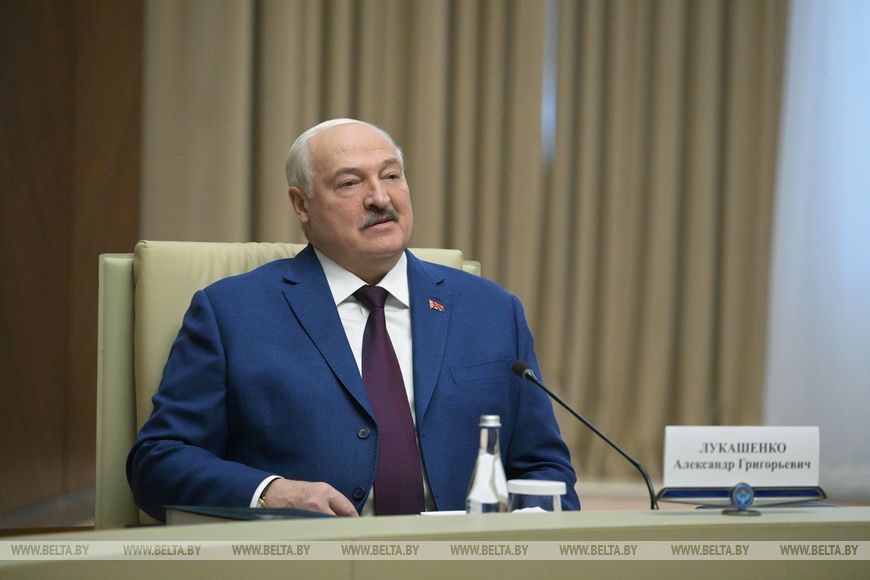
“Western politicians are deliberately preparing for war. It is not us, Vladimir Vladimirovich [Putin, the president of Russia], who are preparing for war, but judging by all the facts, it is them,” the head of state said.
There, in the West, they are actively preaching a policy of isolation and dividing lines.
In contrast to this policy, Belarus advocates for an honest and open dialogue, which is confirmed by the growing popularity of the Minsk International Conference on Eurasian Security. “The OSCE is not working. The heads of state could have gathered long ago to talk about this topic. But someone doesn’t want to,” the Belarusian leader said.
On the CSTO’s relevance and current threats
In the situation described above, the value of the CSTO is not only preserved but is growing. Aleksandr Lukashenko is confident that the Organization is needed, noting that it must be constantly adapted to evolving security challenges and threats. “We seem to have a system in place for the military component, crisis response tools, and the fight against terrorism and drug trafficking,” Aleksandr Lukashenko said.
At the same time, there are a number of challenges and threats, both military and non-military in nature, that require special attention and a response through the CSTO right now.
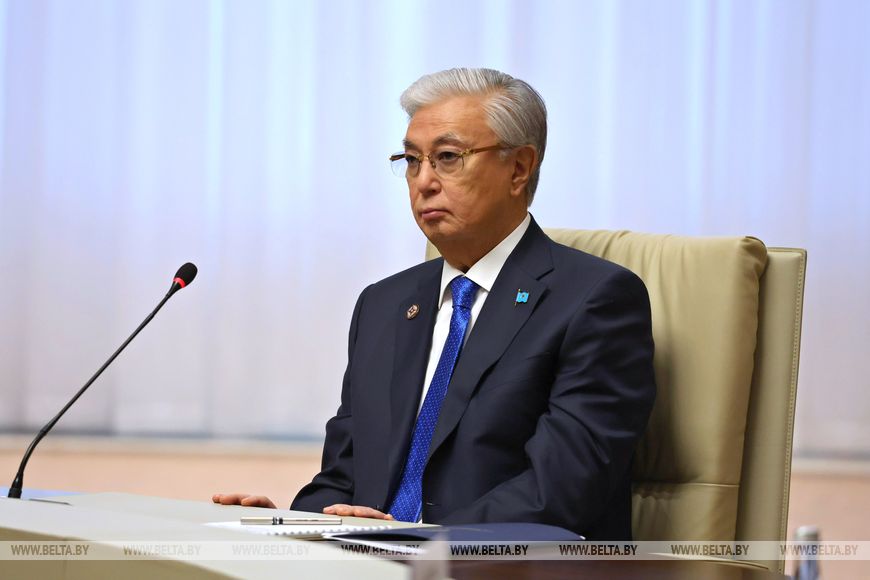

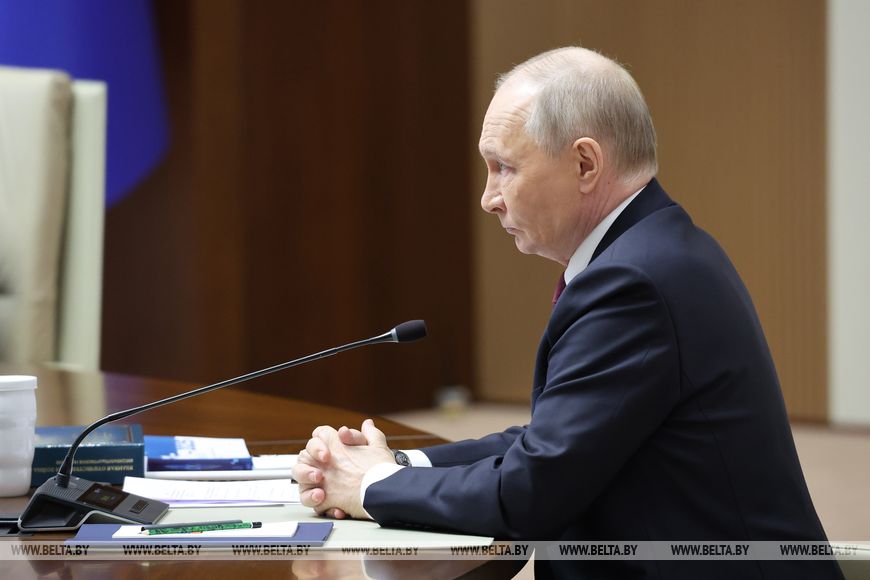
“These include artificial intelligence; unmanned aerial vehicles and lethal autonomous combat systems with self-learning algorithms; cyberterrorism; ensuring the security of vital energy infrastructure facilities, primarily nuclear and hydroelectric power plants; and finally, the problem of closing borders to the movement of goods and people. These issues concern all CSTO member states,” the president emphasized.
Cooperation in cybersecurity is also developing.
Aleksandr Lukashenko considers it extremely important to begin work on further refining the Organization's conceptual documents.
On Trump’s plan and supporting efforts for peace in Ukraine
The president had already spoken about the proposed U.S. peace plan in his address at the CSTO summit, expressing both his own position and that of his colleagues. “We support the efforts of Vladimir Putin and the Russian Federation in responding to the U.S. proposal for peace and a peace treaty in Ukraine. We very much hope this will happen,” he said. “As I said yesterday, if the Americans conduct themselves as diplomats and true lawyers, this peace plan will be finalized, as the main points have already been agreed upon,” the Belarusian leader said.
Aleksandr Lukashenko pointed out that the ball is now in Ukraine’s court, while a number of forces in Europe need to abandon confrontation. “I believe that, in light of the developments on the front, Ukraine will agree to this peace treaty. Otherwise, it will lose the country entirely,” the president said.
The Belarusian head of state commented on this topic in more detail at the request of journalists.
The head of state recounted that the day before in Bishkek, he spoke at length on this topic with the president of Russia. “My understanding is that both he and I have so far seen a non-final and, if you will, an unofficial version. When it is transmitted through official channels to the Russians, then we can talk about specific details,” stated the Belarusian leader. “But I said today that the plan is workable. And Vladimir Vladimirovich acknowledges that it is a good basis for negotiations.”
At the same time, the head of state pointed out that the plan was drafted hastily: “I hope the Trump team will not take offense, but the plan was prepared in haste. I wouldn't say it was written entirely offhand, but in a hurry. It needs to be presented in a clear and concise way, with every detail spelled out precisely. If territorial issues are to be resolved, then everything must be specified down to the meter, the kilometer. It must include specifying the exact location of troops, who should be present and who should not. Everything must be detailed to the last point.”
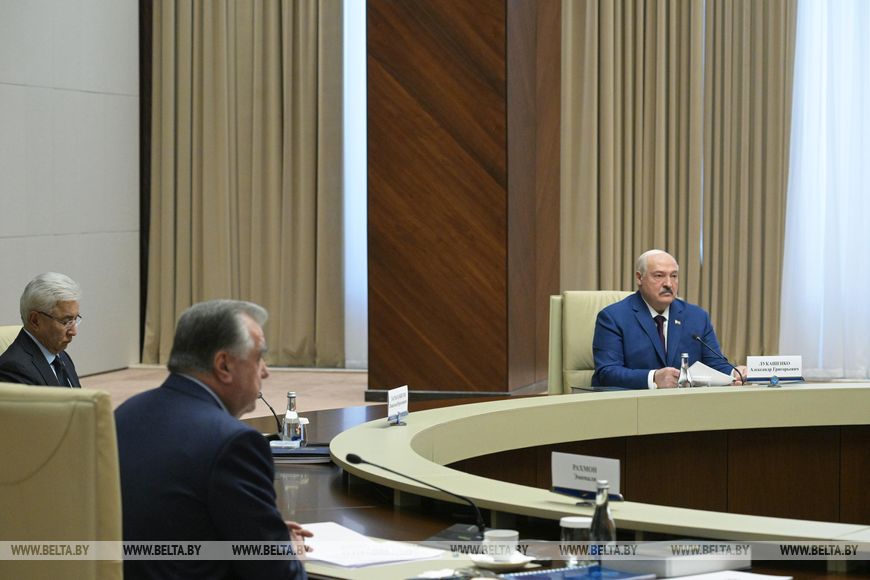
Overall, the Belarusian head of the state truly believes the conflict in Ukraine is nearing its end. “I believe in this more than ever,” he said.
The president also cautioned: “However, this is a war. At any moment, an unforeseen development can overturn the entire situation. That is the nature of war; it is a profoundly critical period for any society and country. Therefore, we cannot afford to relax.”
“This war must be stopped. I think there will be no winner. That would be a catastrophe. You know why there will not be, if suddenly…” the Belarusian leader added.
How was the official visit to Myanmar?
The next stop on the head of state’s major trip was Myanmar. The plane of the Belarusian president landed at Nay Pyi Taw International Airport on 27 November. The airport was decked out not just in the national symbols of Belarus but also in local flair. Aleksandr Lukashenko was given a truly ceremonial welcome: a red carpet laid at the plane’s steps with an honor guard lining its sides. An impressive motorcade accompanied the head of state to his accommodation. The convoy consisted of at least two dozen motorcycles alongside the security vehicles. The capital of Myanmar had been meticulously prepared for the visit, mirroring the airport: city streets were lined with Belarusian flags and banners featuring a portrait of Aleksandr Lukashenko.
Official talks between the President of Belarus and Acting President of the Republic of the Union of Myanmar, Chairman of the State Security and Peace Commission Min Aung Hlaing took place at the Presidential Palace in Naypyidaw on 28 November. The Presidential Palace is the official residence and office of the President of Myanmar in the capital. The Belarusian leader was escorted to the meeting venue by a mounted honor guard of 54 riders. This is the first such occurrence in the history of Myanmar’s protocol practice, underscoring the special status of the visit.
The entire year has been historic in Belarus-Myanmar relations, Aleksandr Lukashenko noted during narrow-format talks with Min Aung Hlaing.
“This is my first visit to Myanmar, and I am genuinely pleased to be here. And since your visit to Belarus in March was the first official visit by a leader of Myanmar to our country, we can say that 2025 is a historic year in our relations,” the Belarusian leader said.

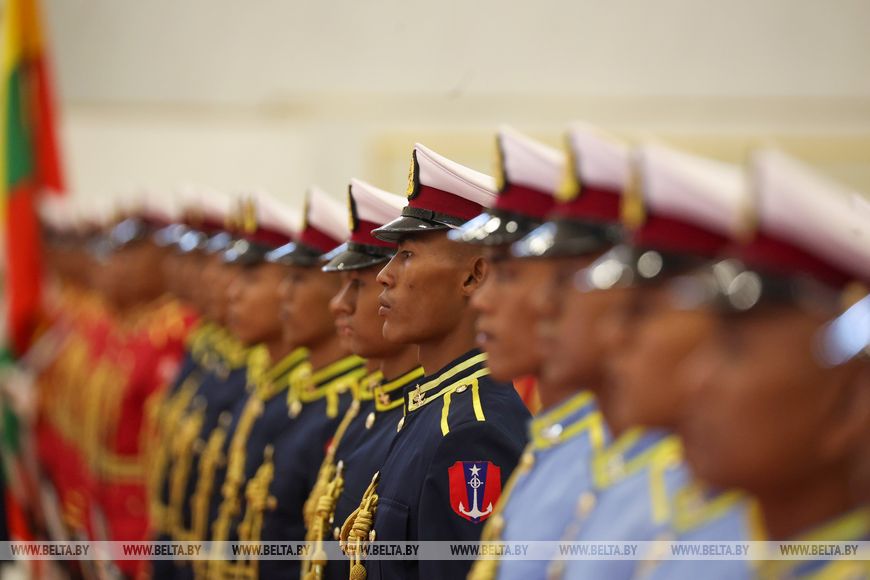
Min Aung Hlaing, in turn, thanked the Belarusian leader for his visit to Myanmar, which confirms the high level of trust and cooperation achieved between the two countries. He also expressed gratitude to the Belarusian side for supporting Myanmar on the international stage, including at the UN General Assembly.
The leaders’ conversation was substantive. During the expanded talks, Aleksandr Lukashenko once again assured Min Aung Hlaing that Belarus is open to expanding cooperation with Myanmar, with Minsk being guided by national interests and without regard to external players.
“Belarus has all it takes to help Myanmar advance technologically. Your government, your ministers have learned some things about Belarus. You know what we are capable of. We are a developed machine-building country; we have advanced industry, agriculture, high technology, education, and healthcare,” the president said.

Among other priority areas, the Belarusian head of state singled out science and the military-industrial complex. He also reiterated that there are no topics that there are off limits in the relations between Belarus and Myanmar.
“The outcome of our work these days can be summarized in one formula: in Belarus, we have everything that the people of Myanmar need today, and you have everything that we need. We have agreed that within the framework of trade and economic cooperation, we will exchange these goods. I emphasize once again: no topics are off limits in our cooperation,” the head of state added.
But Belarus’ potential in working with Myanmar goes beyond merely selling goods. Far more crucial is the transfer of technology and the training to use it. Here, Belarus is also eager to share all of its expertise. “We are ready not only to sell our products to Myanmar. We are ready to set up joint ventures with you in the areas you are interested in. We are also ready to train specialists for the technologies that we will transfer,” Aleksandr Lukashenko said.
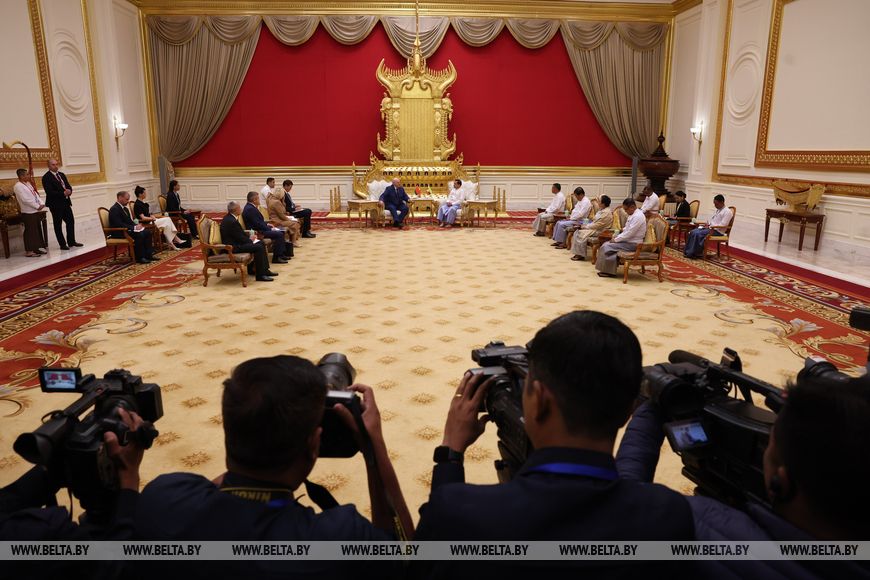
Summing up, the president noted that the high-level talks served as a logical conclusion of this visit, while the main negotiations took place within the framework of the Belarus-Myanmar business forum in Yangon on 27 November. Over these two days, approximately 30 documents were signed in total, with the key ones being the cooperation roadmap for 2026-2028 and the mutual visa waiver agreement. Another important arrangement between the leaders of the two countries was the decision to upgrade the status of Myanmar’s diplomatic mission in Minsk to that of an embassy.
The leader of Myanmar also praised the results of the visit. “Belarus is the most reliable partner for Myanmar, and Myanmar should likewise be the most reliable partner for Belarus,” Min Aung Hlaing said. “The visit of the Belarusian head of state is the first since the establishment of diplomatic relations between our countries. This is a historic event. We discussed issues related to the accelerated implementation of previous agreements, strengthening bilateral relations and cooperation in many areas, especially in defense, agriculture, industry, education, science, technology, healthcare, sport and tourism.”

The symbolic tree planting marked the beginning of the cultural program that followed the meeting between the leaders of Belarus and Myanmar. Aleksandr Lukashenko and Min Aung Hlaing planted a flowering tree symbolizing fortune and prosperity to commemorate the first-ever visit by a Belarusian head of state to Myanmar.
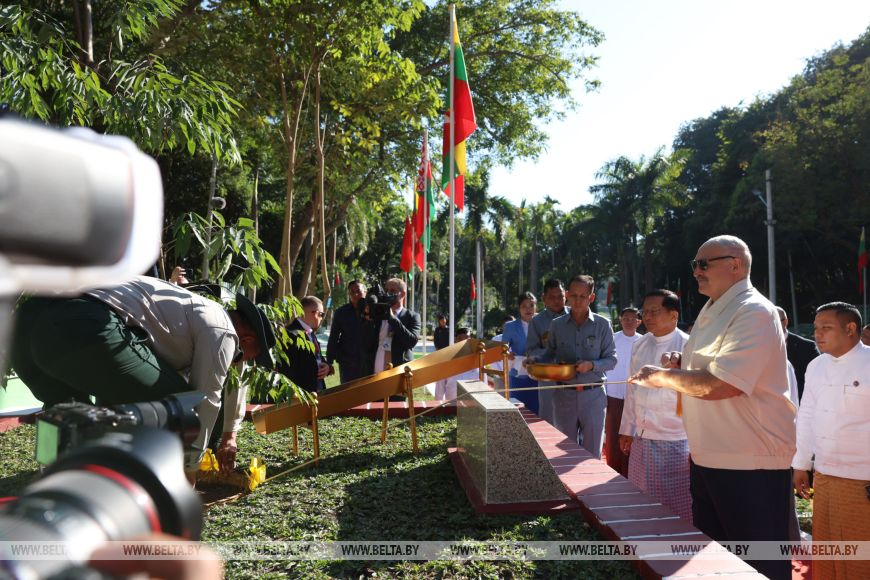
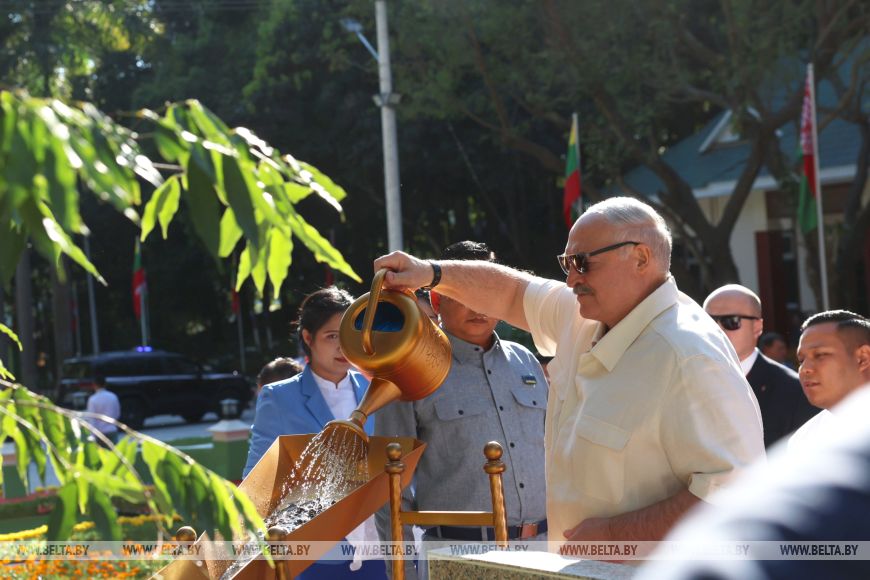
The cultural program then continued to the Maravijaya Buddha temple complex. Dominating the complex is a statue of a seated Buddha, which rises over 27 meters high, weighs more than 5,000 tonnes, and was built using a solid piece of marble. The grounds also include pagodas, fountains, a park, and other objects.
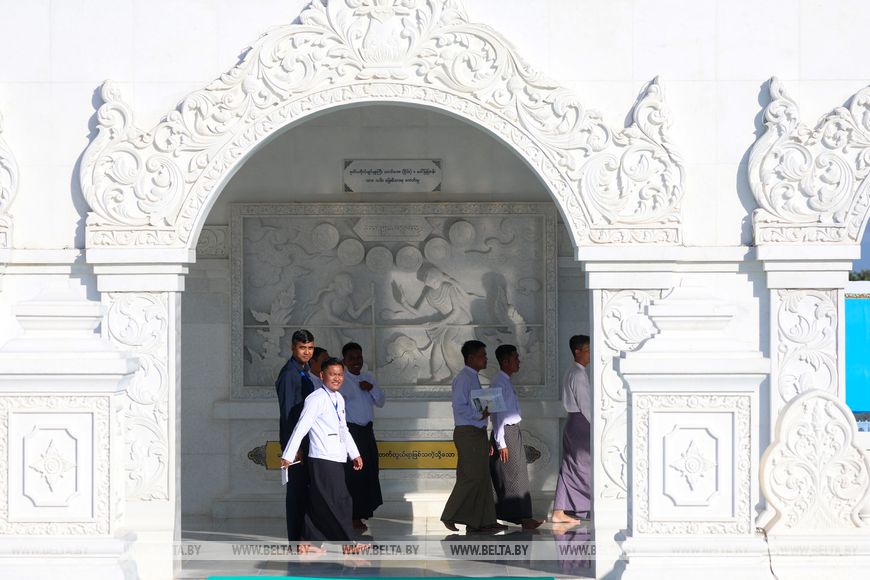
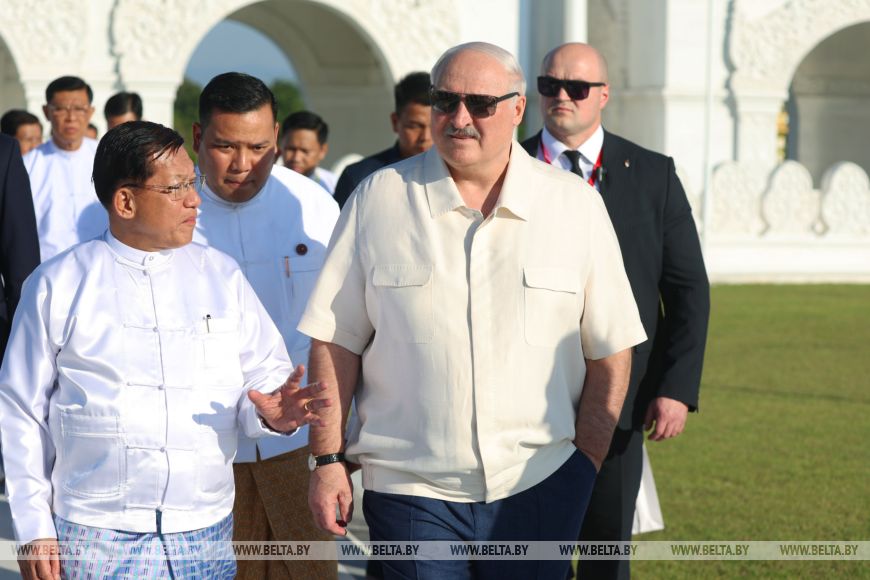
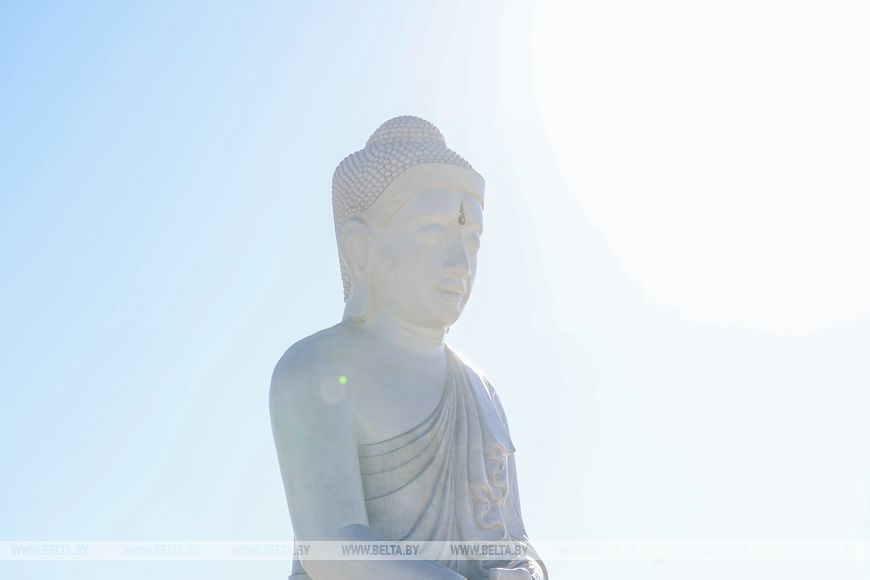
Furthermore, the Belarusian president attended an official dinner hosted by the acting president of the Republic of the Union of Myanmar, chairman of the State Security and Peace Commission. Afterwards, the leaders of Belarus and Myanmar watched a theatrical performance of traditional dances and songs together.
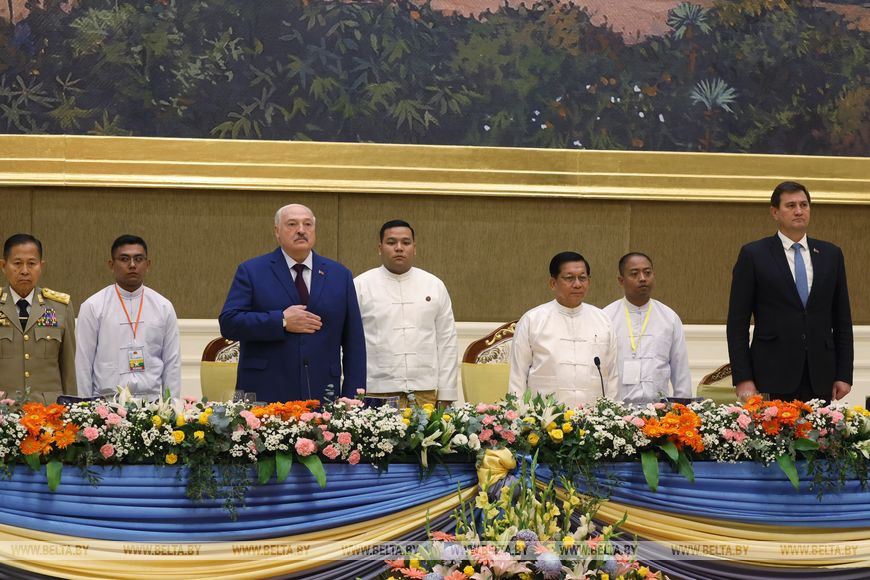

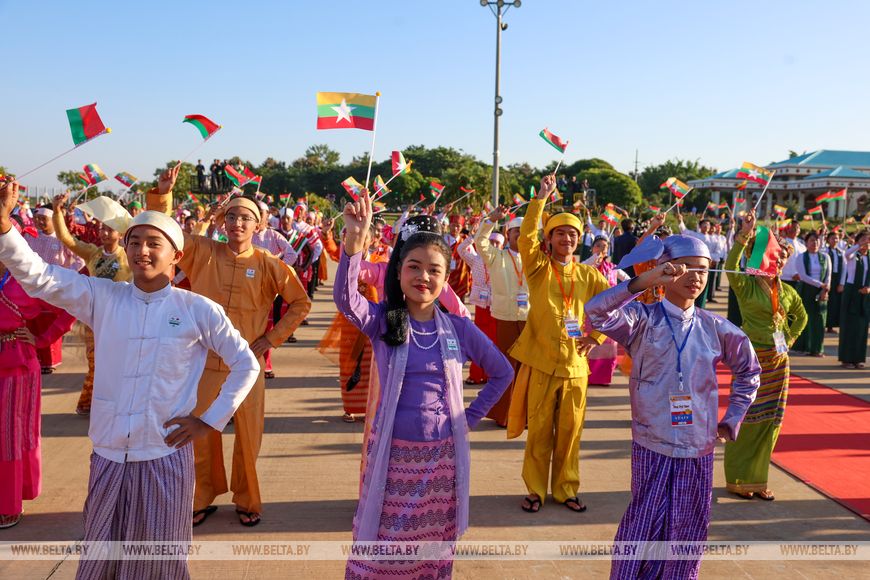
President’s visit to Oman: What’s on the agenda?
Negotiations of the Belarusian head of state with Sultan of Oman Haitham bin Tariq Al Said have been planned.
Belarus-Oman interaction has considerably increased lately, including thanks to a previous exchange of visits. The promising avenues of cooperation that were determined during Aleksandr Lukashenko’s visit to Muscat in 2024 have been built upon and have become the foundation of the genuine roadmap that was signed during the Sultan of Oman’s visit to Minsk in October 2025.
The Belarusian president’s current visit to Oman offers an opportunity to discuss in detail practical steps in furtherance of previous agreements and for the sake of implementing joint projects in various areas.




